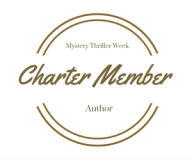How to Change Your Mind
Michael Pollan is a rock star. Not a shooting star, not a fleeting 15-minutes-of-fame star, not a one-hit wonder, but an honest to goodness Influencer, someone who moves the populace, sometimes in small increments, at other times across large swaths of thought, toward a better tomorrow.
I just finished reading How to Change Your Mind, What the New Science of Psychedelics Teaches Us About Consciousness, Dying, Addiction, Depression, and Transcendence, and it was, in a word, illuminating.
Pollan’s has written other books, seven, actually, books like Food Rules (“Eat food, not too much, mostly plants” which cautioned against eating anything with more than five ingredients, especially if you can’t pronounce them); and The Omnivore’s Dilemma (a breakdown of the true cost of growing food) both of which have changed the way we as a society think about food.
The thinking behind Pollan’s work is grand and millennial — as in time, not people — and always represents a departure from current accepted thought. His suggested methods to institute change are not massive, but often a return to a simpler way, and when instituted, can be far reaching — like small ripples on a large lake with an underground spring that connects to groundwater that ties into a river that ultimately flows to the ocean, i.e., gradual change that shifts society in a direction, a more long-lasting variety that generally outlives it’s creator.
In The Tipping Point, author Malcolm Gladwell wrote about how ideas are spread  in society and the types of people that spread them: mavens — those who know a lot about things and want to share their information with you; connectors — those who know a lot of people who do a lot of different things and want to share their connections with you; and salespeople — those who are naturals at selling a product or idea and making it sticky so that everyone wants to own or be a part of it. In modern day parlance, these people are called influencers. (Granted, in the internet age, there are said influencers such as youtubers who have become famous for applying makeup or making a sex tape who do not move the world to a better place; they are really just gaming the system.)
in society and the types of people that spread them: mavens — those who know a lot about things and want to share their information with you; connectors — those who know a lot of people who do a lot of different things and want to share their connections with you; and salespeople — those who are naturals at selling a product or idea and making it sticky so that everyone wants to own or be a part of it. In modern day parlance, these people are called influencers. (Granted, in the internet age, there are said influencers such as youtubers who have become famous for applying makeup or making a sex tape who do not move the world to a better place; they are really just gaming the system.)
Pollan is both a maven and an influencer. It’s obvious from his books that he’s done the research. How to Change Your Mind starts in 1938 when lysergic acid diethylamide or LSD was first synthesized, and loops all the way up and around to present day via 1955 when an amateur mycologist, R. Gordon Wasson, purposely ingested a mushroom, one that the Oaxaca Mexicans called flesh of the gods, and which contained the psychoactive ingredient psilocybin that caused strange visions. Two years later, Wasson published an article in Life magazine and the magic mushroom craze was born.
Pollan’s in-depth look at first the natural history of the fungi, the government regulations that have blocked mushroom research and development for decades; the experts in the field of mycology (relatively few, sadly, since science is discovering that mushrooms are capable of assisting us with a great deal of things from improving mental health to removing plastic waste from the planet); the LSD and mushrooms craze in the 60’s and how that hurt the mushroom movement; the healing nature of psilocybin (used by the Aztecs for thousands of years); and finally, his own foray into mushroom healing is riveting and insightful, making the case for further studying the use of psilocybin, particularly in a society awash in mental health issues like major depression which affects as many as one in 12 adults.
After reading How to Change Your Mind, I am convinced that Pollan is right. Like Columbus, Pollan went in search of a new world, one that began inside the mind and moved outward, one that connected him to all life on the planet and beyond. Like Columbus, he may not have been the first to cover this terrain, but he documented his experience in such a way that the rest of us could tag along, reaping the benefits of what he discovered on the journey. We may be years or even decades away from incorporating such mind-expanding awareness into our world, if ever, but the job of the influencer is done. The case has been made and the facts are there for all to read and decide upon — and that is the beauty of having a mind to change.
pamlazos 6.2.19















Sounds like a powerful read! It’s always such a pity to see something that did good for so many be taken and twisted by those all too eager to abuse that good.
LikeLiked by 1 person
True that. It even worse, to be taken away for fear of what free-thinking it might unleash!
LikeLiked by 1 person
Thank you Pam. I’ll have to try his books 🙂
LikeLiked by 1 person
Pam, I was interested to read about the natural history of mushrooms and mycelium research. I’ve been listening to an Australian mycologist talk about the way fungi could solve many of our environmental issues – fascinating. There are scientists who say we should add fungi to the flora and fauna taxonomies, so crucial are they to the functioning of our natural world. Thanks for another good post.
LikeLiked by 2 people
And now scientists have discovered a mushroom that eats plastic! There’s just no end to the possibilities, Robyn!
LikeLiked by 1 person
Yes! Fungi sequesters carbon and can be used as an alternative to wood for building, and for making food containers. As you say, Pam, the list goes on. So exciting!
LikeLiked by 1 person
👏👏👏
LikeLiked by 1 person
Wow sounds so interesting! Very helpful post
LikeLiked by 1 person
Thanks, Antonia.
LikeLiked by 1 person
Fascinating. Thank you for introducing the book so succinctly. I had no idea the government blocked mushroom research and development. That is infuriating if it has so much potential to help.
LikeLiked by 3 people
Richard Nixon actually shut it down after some early initial success with it. There’s some support for the idea that it kick-started the 60’s “peace and love” revolution. Nixon was afraid that if too many people became too self aware no one would fight in the Vietnam war. So all the research went underground when the government banned it (although the government may have continued doing covert research). It really is a fascinating book.
LikeLike
Thoughtful post. I just got back from two weeks in Japan/South Korea, eating as they do, and do notice a difference in my health. It makes me wonder how much more I need plants and less sugar.
LikeLiked by 4 people
Ah, me, too, Jacqui. I’m pretty good with the plants part but sugar is my go to when I’m tired. Instead of sugar I need to get more sleep!
LikeLiked by 1 person
Sounds absolutely fascinating.
LikeLiked by 2 people
I know, right?♥️
LikeLiked by 1 person
sounds like a book to read…and one my son will devour…
LikeLiked by 4 people
🤗
LikeLiked by 2 people
I’m a huge fan of his and love this latest work.
LikeLiked by 3 people
Me as well, Lesley.
LikeLiked by 1 person
I have heard of Pollen – especially love his famous quote ‘eat food – mainly plants’ as it dovetails with my lifestyle – but have never actually read his books. I have been reading a lot about the psilocybin and ayahuasca discoveries of late though – I’m always interested when I see the pharmaceutical companies making war on natural substances. It’s a sure sign something valuable is about to be shot down and made invisible to the majority of the population so that the manufactured drugs that exacerbate or actually cause depression and diseases can continue to be marketed freely. I shall look into his books, thanks for this post Pam!
LikeLiked by 2 people
And the fact that it could be used to treat the opioid fallout is especially intriguing to me, Pauline. ♥️
LikeLiked by 1 person
Never knew there was such a thing as a mushroom movement.
LikeLiked by 3 people
Well, they don’t move to fast, 💨 Ken, but they do spread!😂
LikeLiked by 1 person
It’s so interesting to me that we’re looking back in order to look forward. Thanks Pam, this was great reading. Mavens rule ok? Malcolm Gladwell’s The Tipping Point is essential reading. Pollan’s book sounds so too – 🙂
LikeLiked by 4 people
As a psychologist, you’d enjoy it, Susan.
LikeLiked by 2 people